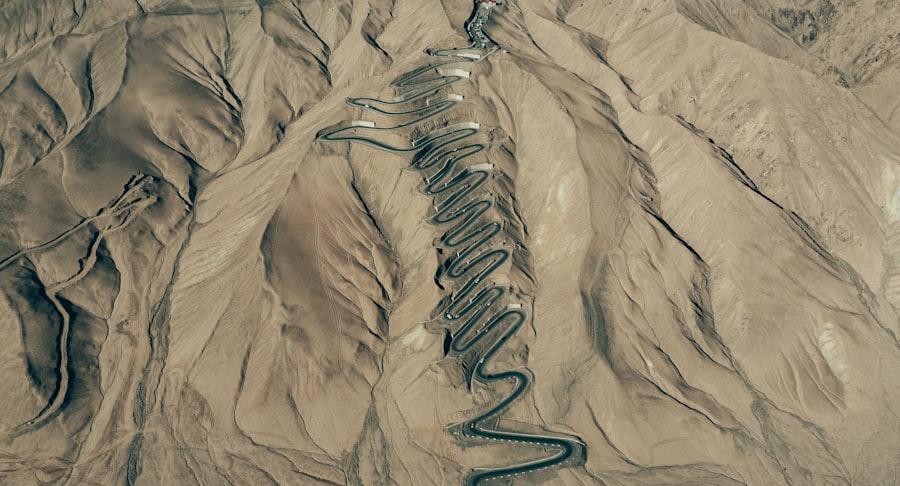The Drake Strait, a formidable body of water located between the southern tip of South America and Antarctica, serves as a critical maritime passage for vessels traversing the Southern Ocean. Named after the English explorer Sir Francis Drake, who was one of the first Europeans to navigate these treacherous waters in the late 16th century, the strait has long captured the imagination of sailors and adventurers alike. Stretching approximately 600 kilometers (370 miles) in width, it connects the Atlantic and Pacific Oceans, making it a vital route for international shipping and exploration.
The strait is not only significant for its geographical position but also for its unique ecological and climatic conditions, which present both opportunities and challenges for those who dare to navigate its depths. The Drake Strait is often characterized by its unpredictable weather patterns and turbulent seas, which can change rapidly and without warning. This unpredictability has earned it a reputation as one of the most challenging maritime routes in the world.
Despite these challenges, the strait remains an essential passage for vessels traveling to and from Antarctica, facilitating scientific research, tourism, and commercial shipping. As global interest in polar regions continues to grow, understanding the complexities of navigating the Drake Strait becomes increasingly important for mariners, researchers, and policymakers alike.
Key Takeaways
- The Drake Strait is a narrow passage connecting the Atlantic and Pacific Oceans, named after the famous explorer Sir Francis Drake.
- The Drake Strait has a rich historical significance, being a key route for early explorers and trade routes, and a site of numerous naval battles.
- The geographic features of the Drake Strait, including strong currents, unpredictable weather, and icebergs, present significant challenges for navigation.
- Navigational hazards in the Drake Strait include rocky outcrops, shallow waters, and strong tidal currents, making it a dangerous passage for ships.
- Strategies for safe passage through the Drake Strait include careful route planning, monitoring weather and tides, and utilizing advanced navigation technology.
Historical significance of the Drake Strait
The historical significance of the Drake Strait cannot be overstated. It has been a pivotal route for explorers, traders, and scientists since its discovery. Sir Francis Drake’s circumnavigation of the globe in the late 1500s marked one of the first European encounters with this challenging waterway.
His journey not only opened up new trade routes but also laid the groundwork for future exploration of the Antarctic region. The strait became a symbol of human perseverance against nature’s formidable forces, as countless adventurers sought to conquer its waves and uncover its secrets. Throughout history, the Drake Strait has also played a crucial role in maritime trade.
During the Age of Sail, it served as a key passage for ships traveling between Europe and the Americas. The strait’s strategic location made it an essential route for transporting goods, including precious metals from South America to Europe. As maritime technology advanced, so too did the understanding of the strait’s challenges and opportunities.
The historical narratives surrounding the Drake Strait reflect humanity’s enduring quest for exploration and discovery, highlighting both triumphs and tragedies that have shaped our understanding of this remote region.
Geographic features and challenges of the Drake Strait

Geographically, the Drake Strait is defined by its rugged terrain and dynamic oceanic conditions. The strait is bordered by Cape Horn to the north and the South Shetland Islands to the south, creating a natural funnel that intensifies ocean currents and wind patterns. The confluence of these elements results in a unique marine environment characterized by strong currents, high waves, and frequent storms.
The strait’s depth varies significantly, with some areas plunging to over 3,000 meters (9,800 feet), while others are relatively shallow. This variability adds another layer of complexity to navigation. Navigating through the Drake Strait presents numerous challenges for mariners.
The combination of strong currents, unpredictable weather, and shifting icebergs creates a perilous environment that demands skill and experience. Additionally, the strait’s remoteness means that vessels may be far from immediate assistance in case of emergencies.
Navigational hazards in the Drake Strait
| Category | Metrics |
|---|---|
| Number of Navigational Hazards | 15 |
| Depth of the Drake Strait | 800 meters |
| Frequency of Icebergs | High |
| Current Strength | Strong |
The navigational hazards present in the Drake Strait are numerous and varied. One of the most significant dangers is the presence of strong currents that can reach speeds of up to 10 knots in certain areas. These currents can create turbulent waters that are difficult to navigate, especially for larger vessels.
Additionally, sudden changes in weather can lead to reduced visibility and dangerous sea conditions, making it essential for mariners to remain vigilant at all times. Icebergs pose another serious threat in the Drake Strait. As glaciers melt due to climate change, more ice is released into the ocean, increasing the likelihood of encountering floating ice masses.
These icebergs can be difficult to spot until they are dangerously close, posing a risk to vessels that may not be equipped to handle such obstacles. Furthermore, shallow areas within the strait can lead to grounding incidents if navigators are not careful. Understanding these hazards is crucial for anyone attempting to traverse this challenging maritime route.
Strategies for safe passage through the Drake Strait
To navigate safely through the Drake Strait, mariners must employ a variety of strategies that account for its unique challenges. One effective approach is thorough pre-voyage planning, which includes studying charts, weather forecasts, and tidal patterns. By understanding the expected conditions during their journey, sailors can make informed decisions about when to set sail and which routes to take.
Additionally, maintaining open communication with other vessels in the area can provide valuable insights into current conditions and potential hazards. Another key strategy involves utilizing experienced crew members who are familiar with the strait’s intricacies. Having skilled navigators on board can significantly enhance a vessel’s ability to respond to changing conditions quickly.
Moreover, investing in modern navigation technology—such as GPS systems and radar—can help mariners detect obstacles like icebergs or shallow waters well in advance. By combining traditional seamanship with contemporary tools and knowledge, sailors can increase their chances of safely traversing this challenging waterway.
Importance of weather and tides in navigating the Drake Strait

Weather plays a critical role in navigating the Drake Strait, as conditions can shift dramatically within short periods. Mariners must be acutely aware of local weather patterns and forecasts before embarking on their journey. Storms can arise suddenly, bringing high winds and rough seas that can jeopardize even well-prepared vessels.
Understanding how weather systems interact with ocean currents is essential for making informed decisions about when to sail and how to adjust course during transit. Tides also significantly impact navigation in the Drake Strait. The tidal range can vary considerably due to geographical features and oceanic influences, affecting water depth in certain areas.
By closely monitoring both weather conditions and tidal patterns, sailors can enhance their situational awareness and improve their chances of a successful voyage through this challenging maritime passage.
Technology and tools for navigating the Drake Strait
Advancements in technology have revolutionized navigation in challenging waters like the Drake Strait. Modern vessels are equipped with sophisticated navigation systems that provide real-time data on position, speed, and environmental conditions. Global Positioning System (GPS) technology allows mariners to pinpoint their location with remarkable accuracy, while radar systems help detect nearby vessels and obstacles such as icebergs or shallow areas.
In addition to these tools, electronic chart systems have become invaluable for navigating complex waterways like the Drake Strait. These systems integrate various data sources—such as weather forecasts, tidal information, and navigational charts—into a single interface that enhances situational awareness for mariners. Furthermore, satellite communication technology enables vessels to stay connected with shore-based support teams or other ships in the area, facilitating timely updates on changing conditions or potential hazards.
By leveraging these technological advancements, sailors can navigate more safely and efficiently through one of the world’s most challenging maritime passages.
Case studies of successful and unsuccessful voyages through the Drake Strait
Examining case studies of voyages through the Drake Strait reveals valuable lessons about both successful navigation and tragic misadventures. One notable success story is that of a research vessel conducting scientific studies in Antarctica. This vessel employed meticulous planning and real-time weather monitoring throughout its journey.
By adjusting its course based on changing conditions and maintaining constant communication with other vessels in the area, it successfully navigated through treacherous waters without incident. Conversely, there have been numerous instances where vessels have encountered disaster while attempting to traverse the Drake Strait. One infamous case involved a cargo ship that underestimated the strength of prevailing winds and currents during its passage.
Despite having experienced crew members on board, poor decision-making led to grounding on submerged rocks—a situation that could have been avoided with better situational awareness and adherence to navigational protocols. These contrasting case studies underscore the importance of preparation, vigilance, and adaptability when navigating this challenging maritime route.
Environmental concerns in the Drake Strait
The ecological significance of the Drake Strait extends beyond its role as a navigational route; it is also home to diverse marine life and unique ecosystems that are increasingly threatened by human activity. As shipping traffic increases due to growing interest in Antarctic resources and tourism, concerns about pollution and habitat disruption have come to the forefront. Oil spills from vessels pose a significant risk to marine ecosystems that are already vulnerable due to climate change.
Additionally, increased shipping activity raises concerns about invasive species being introduced into delicate ecosystems through ballast water discharge or hull fouling. These species can disrupt local food chains and outcompete native organisms for resources. As such, it is crucial for policymakers and maritime organizations to implement regulations that protect these fragile environments while balancing economic interests associated with navigation through the strait.
Legal and regulatory considerations for navigating the Drake Strait
Navigating through the Drake Strait involves navigating not only physical challenges but also legal frameworks that govern maritime activity in this region. Various international treaties and agreements regulate shipping practices in Antarctic waters to ensure environmental protection and safety at sea. The Antarctic Treaty System establishes guidelines for scientific research while promoting cooperation among nations operating in this sensitive area.
Furthermore, national regulations from countries bordering the strait—such as Chile and Argentina—also play a role in governing maritime activities within their territorial waters. Compliance with these legal frameworks is essential for ensuring safe navigation while minimizing environmental impacts associated with shipping traffic through this vital passageway.
The future of navigating the Drake Strait
As global interest in polar regions continues to rise due to climate change impacts and resource exploration opportunities, navigating the Drake Strait will remain a critical focus for mariners worldwide. The challenges posed by this formidable waterway will require ongoing adaptation as technology advances alongside environmental changes affecting weather patterns and marine ecosystems. Future navigation strategies must prioritize safety while balancing economic interests with environmental stewardship—ensuring that this vital passage remains accessible without compromising its ecological integrity or historical significance.
By fostering collaboration among nations operating within these waters while investing in innovative technologies for safer navigation practices, humanity can continue its legacy of exploration while respecting nature’s boundaries within one of Earth’s most challenging maritime environments.
The Drake Strait, a crucial maritime passage connecting the Atlantic and Pacific Oceans, is renowned for its challenging navigation conditions and rich biodiversity. For those interested in exploring more about the geographical significance and the environmental aspects of such regions, a related article can be found on MyGeoQuest. This resource provides insightful information on various geographical phenomena and their implications. To delve deeper into these topics, you can visit the article on their website by following this link.
WATCH HERE: Drake Passage: Earth’s Deadliest Waters Revealed
FAQs
What is the Drake Strait?
The Drake Strait is a narrow passage of water that separates the southern tip of South America from the northern tip of Antarctica.
How wide is the Drake Strait?
The Drake Strait is approximately 800 kilometers (500 miles) wide at its narrowest point.
What is the significance of the Drake Strait?
The Drake Strait is an important maritime route for ships traveling between the Atlantic and Pacific Oceans. It is also known for its challenging and unpredictable weather conditions.
Who is the Drake Strait named after?
The Drake Strait is named after the English explorer Sir Francis Drake, who is believed to have been the first European to navigate the waters of the strait in 1578.
What wildlife can be found in the Drake Strait?
The Drake Strait is home to a diverse range of marine wildlife, including whales, seals, and various species of seabirds. It is also known for its rich fishing grounds.
What are the weather conditions like in the Drake Strait?
The Drake Strait is known for its notoriously rough and unpredictable weather, with strong winds, high waves, and frequent storms. These conditions can make navigation through the strait challenging for ships.
